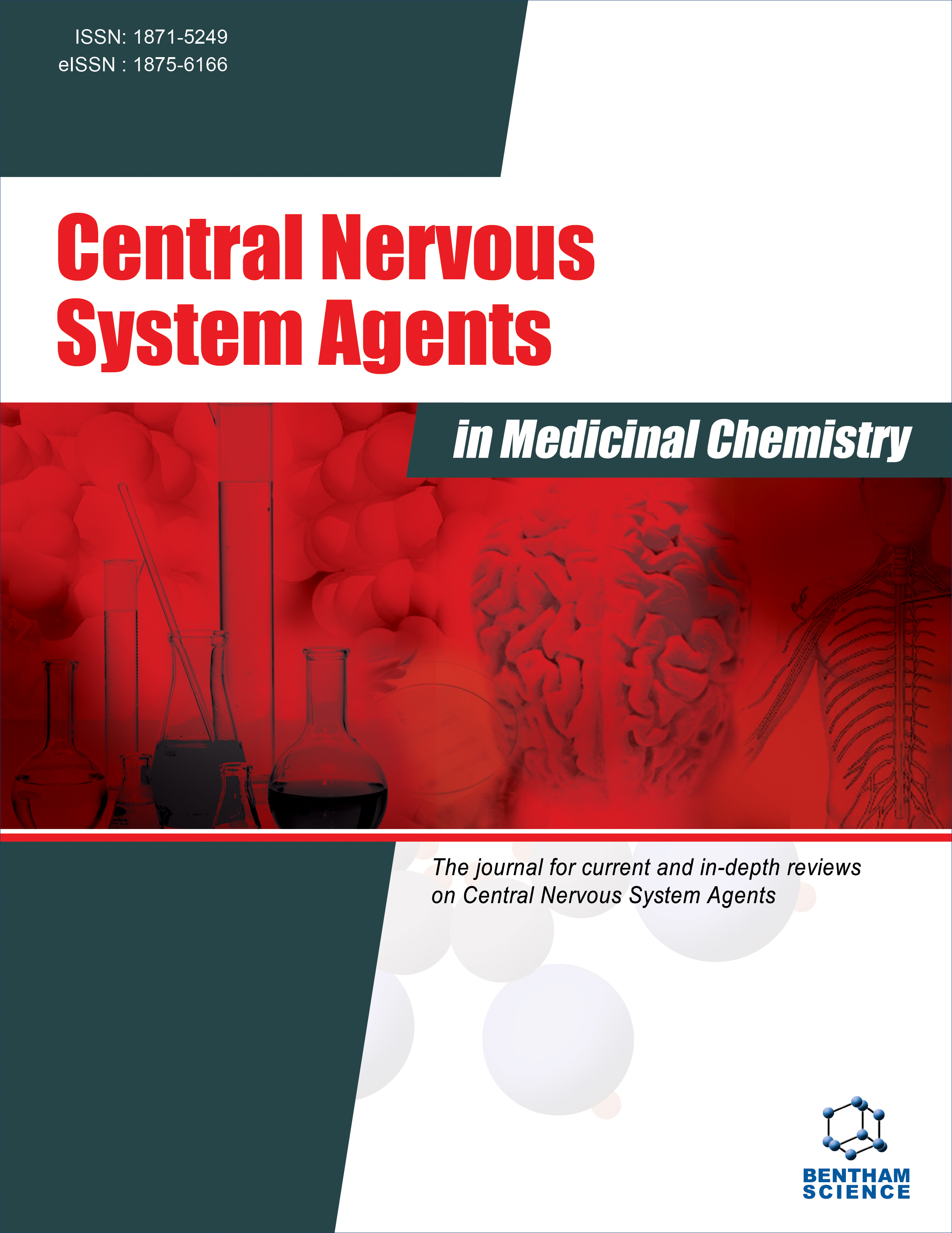- Home
- A-Z Publications
- Central Nervous System Agents in Medicinal Chemistry (Formerly Current Medicinal Chemistry - Central Nervous System Agents)
- Previous Issues
- Volume 20, Issue 1, 2020
Central Nervous System Agents in Medicinal Chemistry (Formerly Current Medicinal Chemistry - Central Nervous System Agents) - Volume 20, Issue 1, 2020
Volume 20, Issue 1, 2020
-
-
Conversion of Benzimidazoles, Imidazothiazoles and Imidazoles into more Potent Central Nervous System Acting Drugs
More LessBackground: Benzimidazole (albendazole), imidazothiazole (levamisole) and imidazole (euconazole) are used in chemotherapy of helminthosis and mycosis respectively, with central nervous system (CNS) side effects. But only a limited number of azole groups are used clinically in the treatment of CNS diseases, which are on increase and could not be cured permanently. Due to increased incidence of more challenging new CNS d Read More
-
-
-
An Evaluation of the Effects of Pyridoxal Phosphate in Chlorpromazine-induced Parkinsonism using Mice
More LessBackground: Parkinsonism is a neurodegenerative disorder with a heavy disease burden, despite the discovery and application of drugs. Current research is beginning to suggest the possible crucial roles of micronutrients such as pyridoxal phosphate in the prevention or management of neurodegenerative disorders. Objective: We investigated the possible protective effects of supplemental pyridoxal phosphate in Chlorpro Read More
-
-
-
Electronegativity in Substituted-4(H)-quinazolinones Causes Anxiolysis without a Sedative-hypnotic Adverse Reaction in Female Wistar Rats
More LessAuthors: Shweta Mishra, Debashree Das, Adarsh Sahu, Ekta Verma, Shailendra Patil, Ram K. Agarwal and Asmita GajbhiyeObjective: In the current study, the synthesis, characterization, and neuropharmacology of quinazolinone tethered with aromatic (3a-3i) and heteroaromatic substitution (3j, 3k, and 3l) as effective anxiolytic agents are reported. Background: Anxiety and depression are often comorbid with neurological as well as other medical maladies. Clinically known anxiolytics (Benzodiazepines) are accompanied by untoward sedation a Read More
-
-
-
Screening of Some Novel 4, 5 Disubstituted 1, 2, 4-Triazole-3-thiones for Anticonvulsant Activity
More LessAuthors: Krishan K. Verma, Umesh K. Singh and Jainendra JainObjective: In the present study, we synthesized fifteen 4, 5-disubstituted 1, 2, 4-triazol- 3-thione derivatives and evaluated for anticonvulsant activity with neurotoxicity determination. Methods: The synthesized compounds were characterized using FTIR, 1H-NMR and MS. The molecular docking study was also performed to study the interactions of compounds with LYS329 residue of gamma amino butyric acid aminotrans Read More
-
-
-
An Assessment of the Effects of Azodicarbonamide-containing Diet on Neurobehaviour, Brain Antioxidant Status and Membrane Lipid Peroxidation Status in Rats
More LessBackground: Azodicarbonamide is a dough-enhancer used in the process of breadmaking in countries like Nigeria. While there have been suggestions that it is a sensitizer of the respiratory system, there is a dearth of information on its effects on the central nervous system. Aim: This study assessed the effects of azodicarbonamide on the central nervous system (ADA) in rats. Objective: The effects of ADA-containing di Read More
-
-
-
The Computational Analysis Conducted on miRNA Target Sites in Association with SNPs at 3’UTR of ADHD-implicated Genes
More LessAuthors: Adel Abdi, Mina Zafarpiran and Zeinab S. FarsaniBackground: Attention-deficit/hyperactivity disorder (ADHD) is a frequent chronic neuropsychiatric disorder in which different factors including environmental, genetic, and epigenetic factors play an important role in its pathogenesis. One of the effective epigenetic factors is recognized as MicroRNAs (miRNAs). On the other hand, it has been indicated that the single nucleotide polymorphism (SNPs) present within 3'UTR (3' u Read More
-
Volumes & issues
-
Volume 25 (2025)
-
Volume 24 (2024)
-
Volume 23 (2023)
-
Volume 22 (2022)
-
Volume 21 (2021)
-
Volume 20 (2020)
-
Volume 19 (2019)
-
Volume 18 (2018)
-
Volume 17 (2017)
-
Volume 16 (2016)
-
Volume 15 (2015)
-
Volume 14 (2014)
-
Volume 13 (2013)
-
Volume 12 (2012)
-
Volume 11 (2011)
-
Volume 10 (2010)
-
Volume 9 (2009)
-
Volume 8 (2008)
-
Volume 7 (2007)
-
Volume 6 (2006)
Most Read This Month
Article
content/journals/cnsamc
Journal
10
5
false
en


